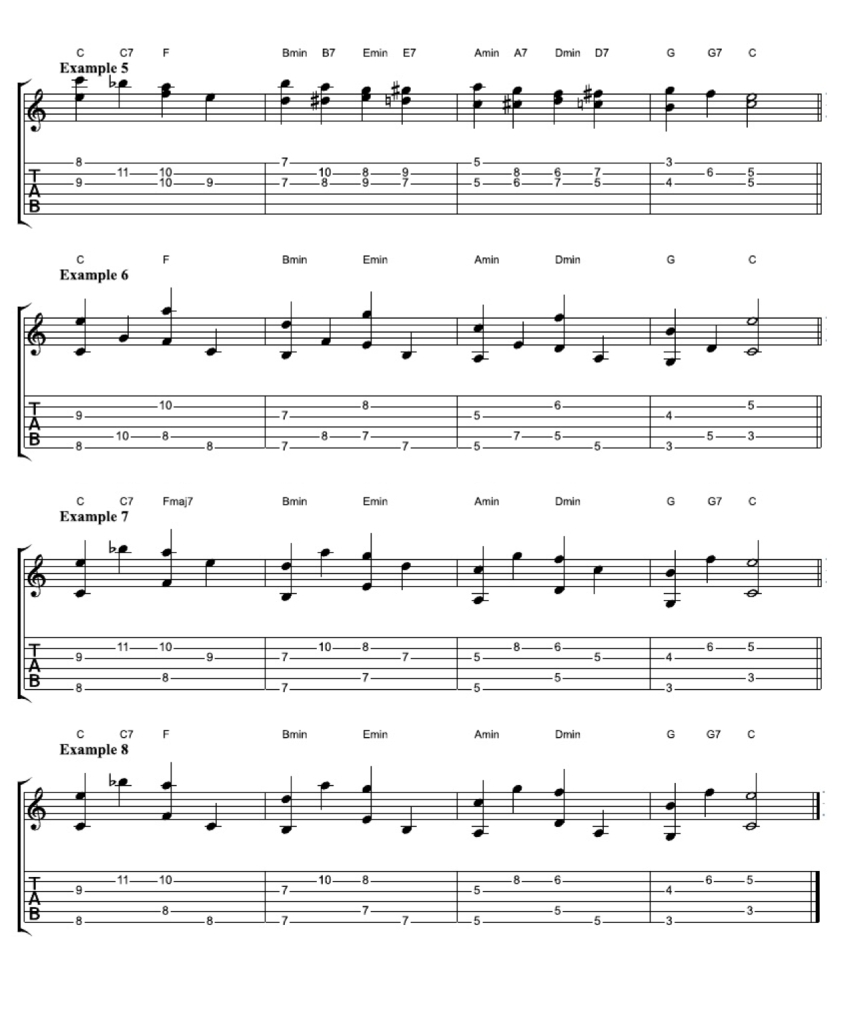counterpoint (kountr-point)n. 1. Musica. Melodic material that is added above or below an existing melody.
b. The technique of combining two or more melodic lines in such a way that they establish a harmonic relationship while retaining their linear individuality.
c. A composition or piece that incorporates or consists of contrapuntal writing.
This is an area that is easy to overlook on guitar. We spend so much time practicing chord voicings, scales etc. that we relegate the use of diads (two notes at a time) to things like double stops or strict scalar movement. Two notes together can move in more ways than up and down together.
There are four types of contrapuntal movement.
1. Oblique Motion - One voice moves while the other remains motionless
2. Similar - Both voices move together in the same direction enharmonically
3. Parallell - Both voices move together in the same direction in the same intervallic structure
4. Contrary - Both voices move in opposite directions
(To keep things simple, the lesson will focus on roots and thirds and quarter note rhythms.)
Example 1 is a simple diatonic cycle of fourths progression. C,F,Bmin,Emin,Amin,Dmin,G,C. All roots and thirds. This will provide the groundwork for the voice movement to come.
Example 2 uses motion on the upper voice approaching its destination from a scale tone above. The motion between beats 1 and 2 is an example of Oblique Motion with the bottom voice staying stationary. However, if we look ahead to beat three we have Contrary Motion between the bottom voice and top voice when both make their moves to the next chord. Interesting.
Example 3 uses motion on the lower voice approaching its destination from a scale tone above. It's the same concept as the previous example with the same results.
Example 4 interchanges motion between voices. The upper voice approaches the next chord tone, then sustains (oblique) while the lower voice approaches its next tone by a scale tone above.
Whenever a chord ascends by a fourth (or descends by a fifth) a Dominant 7th can be substituted to give a V7-I effect. Example 5 uses this technique in all places possible and has an impressive effect, aurally and contrapuntally. How many different types of Counterpoint do you see between each quarter note? Do some Dominant 7th substitutions sound better than others in this example?
Examples 6, 7 and 8 use the same techniques we used in previous examples but the roots have been dropped an octave to give an impression of a separate bass line over the single notes above it.
Try these techniques over more popular chord progressions like I-IV-V, I-vi-ii-V, or even a blues. You could even try it with the pop staple I-V-vi-IV.


Jeremy Rouse is a Toronto based guitarist who has played for Jesus Christ Superstar (with Ted Neeley) and the 30th anniversary tour of Cats.
Besides performing in the orchestra pit for musicals he has performed with The Big Smoke Big Band, The George Lake Big Band and Swing Shift in Toronto, and has also played with his own group Pre Season Draft, an instrumental Country/Spaghetti Western Swing group.
Rouse was featured on the cover of CMT magazine in January of 2001, and was the guest guitar columnist for Canadian Musician Magazine in February, 2001.